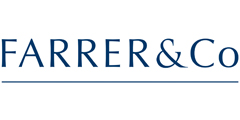


Sponsor introducing: Andy Peterkin, Farrers & Co; Uner Nabi and Dr Anthony Kirby, EY
Facilitator: Alex Johnson, Scorpio Partnership
Key message
FAMR is moving quickly with private banks and wealth managers needed to influence the debate on how to close the advice gap. Aspects of MiFID II will be implemented in 2017 and firms should make progress on areas of regulations which have full clarity.
Headlines
FAMR consultation period ends soon on 22 December with firms encouraged to answer the “cry for help” from the FCA in trying to close the advice gap.
- Aspects of MiFID II will be delayed beyond January 2017 although some of the regulations will likely be implemented from this date.
- MiFID II will change the industry more significantly than firms are recognising with product governance and cost disclosures the biggest problem areas.
Key themes
The session opened with delegates discussing the Financial Advice Market Review (FAMR). Launched in August by the FCA and HM Treasury, FAMR addresses the “advice gap” created by the Retail Distribution Review (RDR). The number of financial products sold without professional financial advice has significantly increased over the past three years as lower net wealth clients have been priced out by RDR. Subsequently, the FCA has issued a cry for help and seemed to be suggesting “we now have this problem, can you tell us how to fix it?”. The deadline for answering the FAMR consultation paper is 22 December ahead of next year’s Budget – an extremely tight timescale.
Some delegates acknowledged that RDR had improved professionalism and charge transparency although most agreed on the need for FAMR. One attendee suggested it is perhaps “better to have no advice than bad advice” and that there was a higher residual risk in giving advice to “advice gap” clients.
The difference between the advice process and guidance information was also a concern, especially in light of the upcoming MiFID II regulations. Of note, the MiFID II framework is an EU directive aimed at making financial markets more efficient, resilient and transparent.
Recent media reports regarding a potential delay to MiFID II captured delegates’ interest with most seeking further clarity from the experts. The implementation date of 3 January 2017 for MiFID II has appeared unrealistic for some time with furtherplanned meetings needed in Brussels by the European Commission to resolve outstanding issues ideally before 2016. Long IT lead times is creating delays as the individual national competent authorities (overseen by ESMA)do not all have the necessary infrastructure to receive the mass of transaction reports required by new regulations. Experts advised that is unlikely that all of MiFID II could be delayed by up to 12 months and that a staggered approach may be adopted (as was the case with EMIR).
Despite the ambiguity of some regulations, experts identified reasonable areas of certainty including firm governance, most aspects of investor protection, client reporting and record keeping which firms could make progress on.
High impact areas needing further clarification included product governance and how firms identify the appropriate target market for each financial product. It was estimated that just under80% of products would likelyautomatically fall into the “complex” categorisation for the directive’s appropriateness requirements. However, 10% of products have yet to be categorised including those which rely on papers pre-dating MiFID I. Delegates debated situations where it is uncertain where the responsibility for appropriateness tests would lie between the manufacturer and distributer. Moreover, PE products could be subject to reviews over the whole life cycle which could be a bureaucratic and costly business. The experts were aware of some manufacturers targeting professional investors who might consider changing characteristics of products to incorporate some that lie outside the scope of the current MiFID II.
Cost and fee disclosures under MiFID II possibly present the biggest problem area with all costs, including transaction costs, having to be communicated up-front (ex-ante) to clients. However, wealth managers do not know the basis point cost of a trade in a pre-event scenario and will have to add their own costs to that of the product manufacturers. Onerous suitability assessments also require private banks to demonstrate why one product is more suitable than alternatives in terms of cost. Attendees speculated that suitability assessments could be commoditised and push the industry away from the drive to be more tailored to clients.
Final discussions concerned the potential impact of MiFID II and whether it would lead to the “death of advisory”. Delegates indicated that firms would offer fewer products with costs set to increase which could detrimentally affect clients. Additionally firms could set themselves up as third-party data providers in order to outsource reporting elements while technologies such as blockchain may have a part to play, perhaps from as early as 2018.
Conclusions
- Delegates should be actively involved in the FAMR consultation due to the current abstraction of regulation and its potential impact on the future of advised business.
- Firms should not expect all aspects of MiFID II to be delayed past 3 January 2017 and implement processes in areas where the framework offers full clarity. They should also consult with national regulators about how the measures under the Directive part might be transposed.
MiFID II will have far-reaching consequences for the wealth management industry and cost margins are expected to be further squeezed


